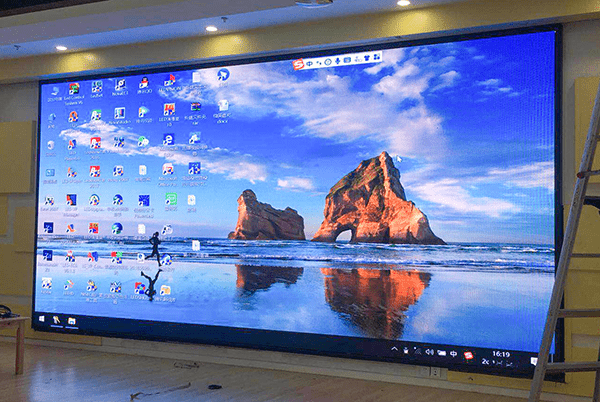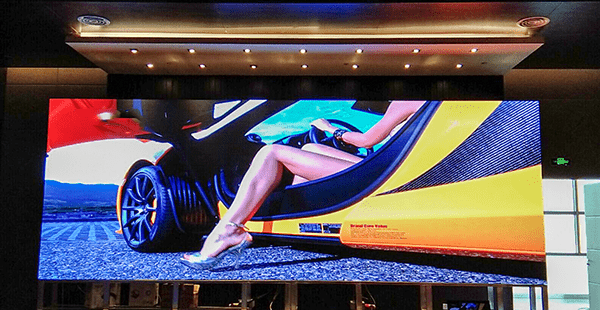With the rise and development of full-color LED displays, various industries have begun to use LED displays to meet the needs of large-scale commercial advertising. In the future, the functionality of LED display screens will be explored to a greater extent, and applications will be more extensive. In order to attract more advertising owners and audiences, the super-large LED display splicing screen has become an inevitable trend of development.

Small pitch
In order to obtain a better viewing effect in the future, the LED display will have higher and higher requirements for the fidelity of the display screen. If you want to be able to restore the authenticity of colors and display clear images on smaller displays, then high-density, small-pitch LED displays will become one of the future development trends. The indoor display market is dominated by rear-projection displays, but rear-projection technology has natural flaws. First of all, the 1 mm seam between display units that cannot be eliminated can swallow at least one display pixel. Secondly, it is also inferior to the direct-emitting LED display in terms of color expression.
Energy-saving intelligence
Compared with other traditional advertising methods, LED display has its own energy-saving and environmentally friendly "halo" --- LED display has a function of self-adjusting brightness. The luminescent material used in the LED display itself is an energy-saving product. However, due to the large area and high brightness of outdoor display screens, the power consumption is still large. However, for outdoor LED displays, due to the great changes in the ambient brightness during the day and night, the brightness of the LED display needs to be reduced at night, so the brightness self-adjustment function is very necessary.
In view of the fact that the luminescent material of the LED display itself is an energy-saving natural attribute, but in the actual application process, the display area is usually a large occasion, long-term operation and high-brightness playback, the power consumption is naturally not to be underestimated. In outdoor advertising applications, in addition to the costs associated with the LED display itself, the advertising owners will also increase the electricity bill geometrically with the use of the equipment. Therefore, only the improvement of technology can solve the problem of greater energy saving of products from the root cause.

Lightweight trend
At present, almost everyone in the industry advertises the characteristics of thin and light boxes. Indeed, thin and light boxes are an inevitable trend to replace iron boxes. The weight of the old iron boxes is not low, plus the weight of the steel structure, the overall weight is very heavy. . In this way, many floors of buildings are difficult to withstand such heavy attachments, the load-bearing balance of the building, the pressure of the foundation, etc. are not easy to accept, and it is not easy to disassemble and transport, and the cost is greatly increased. Therefore, the light and thin box body is not allowed by all manufacturers. A trend that is not updated.
Human screen interaction
Human-screen interaction is the final trend of the intelligent development of LED displays. Why do you say that? Because from the product point of view, intelligent LED displays are to enhance user intimacy and operating experience. Under this background, the future LED display will no longer be a cold display terminal, but a technology based on infrared sensor technology, touch function, voice recognition, 3D, VR/AR, etc., which can interact with the audience. Smart display carrier.
In the 21st century, smart LED displays have shown a trend of segmentation and diversification in the field of product application. Smart transportation, smart large-screen monitoring, smart stage, smart advertising and other different industries, smart small spacing, smart A variety of smart LED display products such as full-color LED displays and smart transparent screens. However, no matter how many fields and products, there is one thing that does not deny that the research and development of smart LED display products requires more design and development for user-level operators. In order to truly solve the general needs of users, realize the general intelligence of the product market, and finally win the market's approval.
Post time: Jul-01-2021

